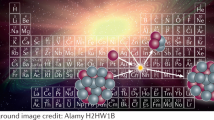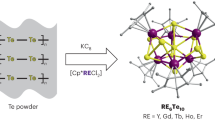Abstract
On the basis of any theory of atomic structure which classifies the elements according to rare gas type, cerium and thorium should be comparable with one another, since the atoms of each are possessed of four electrons more than those of the corresponding inert gases, xenon and niton respectively. There are, however, in the thorium atom, thirty-two more extra-nuclear electrons than in the cerium atom. In spite of this fact, it appears that the distances between atomic centres in crystals of these elements are practically the same (Ce = 3.62 A.U. andTh = 3.56 A.U., according to Hull), the distance being, if anything, slightly the smaller for thorium. Both crystallise in the face centred cubic lattice. If the interatomic distances may be taken as representing atomic diameters, this means that in the same (or slightly less) volume there are concentrated in the thorium atom thirty-two more electrons than in the cerium atom, the total numbers in the two cases being, respectively, ninety and fifty-eight.
This is a preview of subscription content, access via your institution
Access options
Subscribe to this journal
Receive 51 print issues and online access
$199.00 per year
only $3.90 per issue
Buy this article
- Purchase on Springer Link
- Instant access to full article PDF
Prices may be subject to local taxes which are calculated during checkout
Similar content being viewed by others
Author information
Authors and Affiliations
Rights and permissions
About this article
Cite this article
PEASE, R. Atoms and Electrons. Nature 110, 379–380 (1922). https://doi.org/10.1038/110379b0
Issue Date:
DOI: https://doi.org/10.1038/110379b0
Comments
By submitting a comment you agree to abide by our Terms and Community Guidelines. If you find something abusive or that does not comply with our terms or guidelines please flag it as inappropriate.



